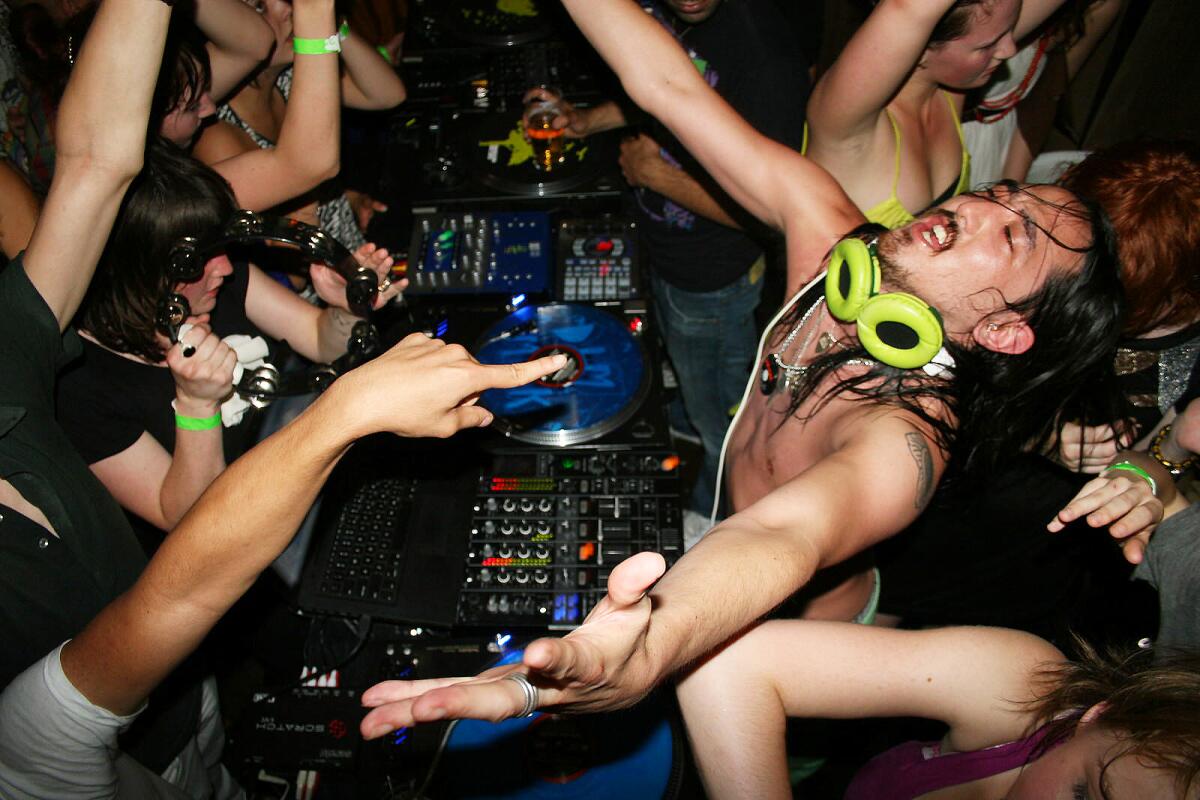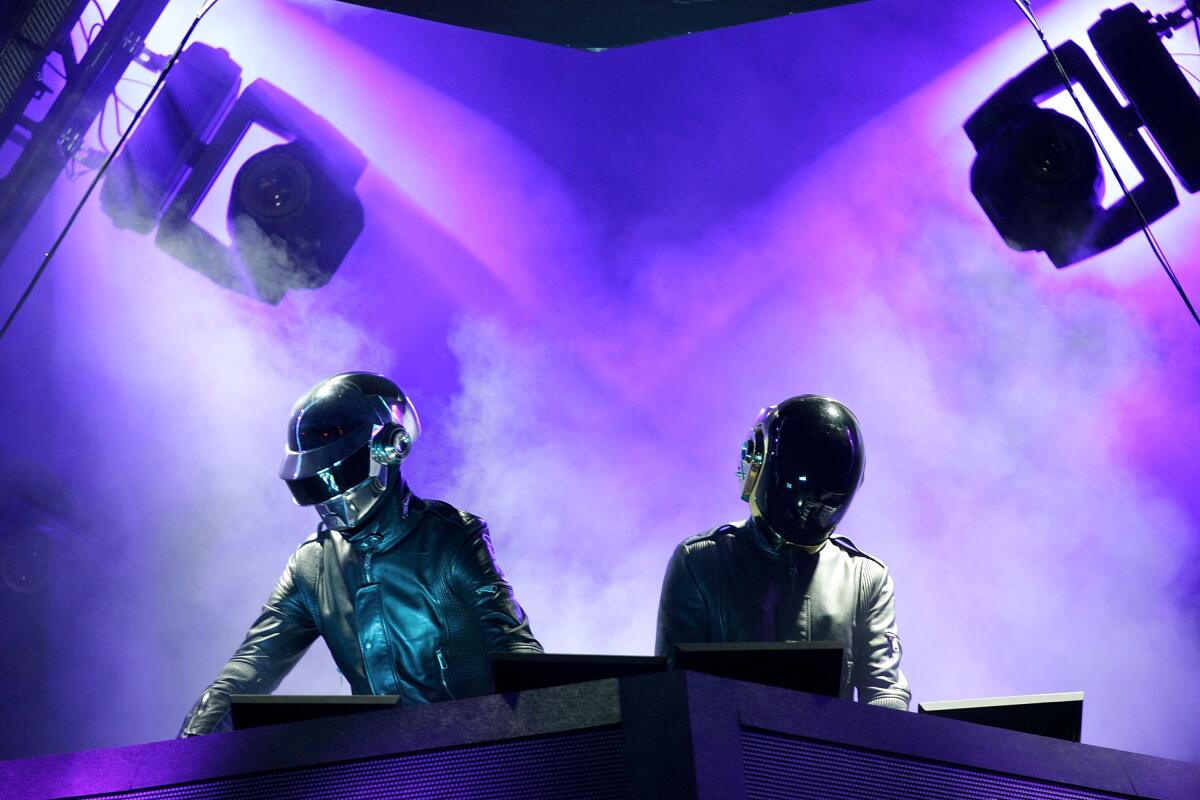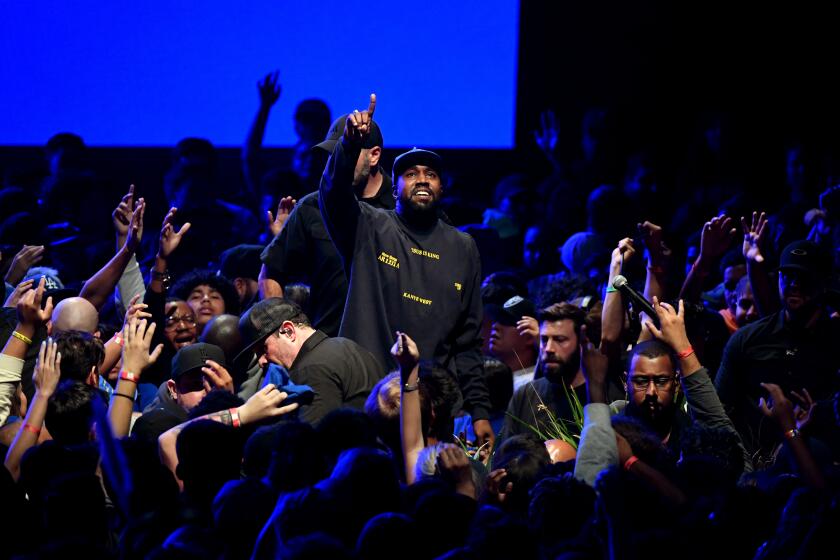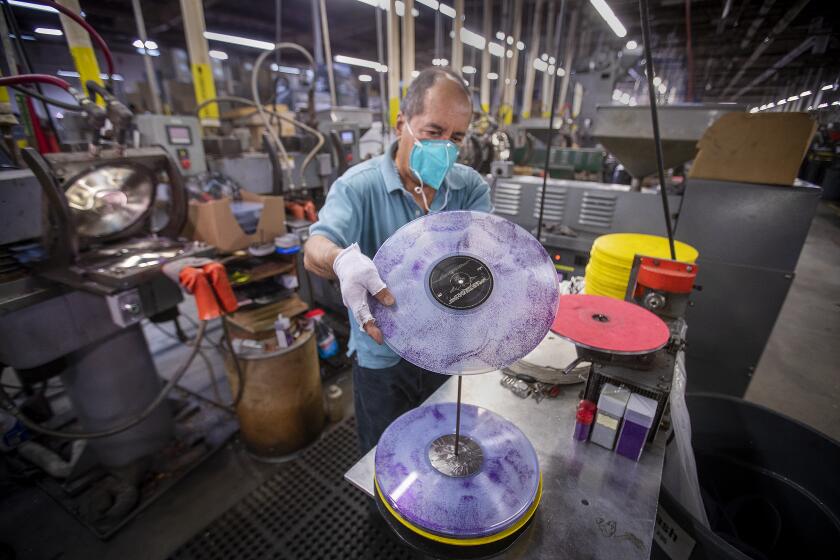Yes, 2022 is already the worst. So let’s revisit the ’00s DIY club scene known as ‘bloghouse’

- Share via
In case you haven’t checked Instagram or TikTok lately, 2000s nostalgia has captured the hearts and feeds of millennials and Gen Z. Pop punk is back in the mainstream, celebrities are rocking Ugg boots once more and Vogue is pining for the era of tastemaking fashion blogs.
When writer Lina Abascal remembers her 2000s as a teenager in Los Angeles, she thinks of when she traded in the rarefied air of indie rock — chaste Decemberists concerts where people kept their arms crossed and judged the contents of each other’s iPods — and followed the trail of Myspace It Girls to her first bloghouse parties, where the Four Loko was flowing and gold lamé hot pants were a staple on the dance floor.
In her new book, “Never Be Alone Again: How Bloghouse United the Internet and the Dancefloor,” Abascal, 31, documents the international dance music scene known as bloghouse. Active between 2006 and 2011, bloghouse was less defined by its sound — though its progenitors spawned variants of disco, hip-hop and house — or by its ’80s, American Apparel swap-meet fashion, than by the means of discovery.
“Music was at the core,” says Abascal, “but it was more about how you found it: Passion-project MP3 blogs, aggregators like the Hype Machine or auto-playing from obsessively curated Myspace pages.”
Kanye West is expected to headline Coachella alongside Billie Eilish in April, pending further restrictions due to the Omicron variant.
Born to Chilean and American parents, Abascal grew up in Venice Beach and was first captivated by L.A.’s bloghouse scene as a teen beat reporter for indie music publications. Like many millennials, Abascal spent her youth combing Myspace for her next favorite artists — and, later, high-contrast photos from their raucous house shows. At best, they rivaled the glamour of Andy Warhol’s Factory parties; typically, those same pics were often cruelly dissected on popular blog Hipster Runoff.
“Nobody called it bloghouse back then,” says Abascal, but whatever it was called, it piqued the interest of the stars. In Los Angeles, Dolly Parton and Corey Feldman could be seen hanging with Skrillex at a goth bar called Moscow. In New York City, Madonna famously swanned into a party hosted by DJ trio the Misshapes to promote her 2005 disco-pop album, “Confessions on a Dance Floor.” And in Copenhagen, Kanye West became acquainted with bloghouse when he stormed the stage at the MTV European Music Awards in 2006 — three years before the Taylor Swift Video Music Awards fiasco — after losing the award for best video to Simian Mobile Disco and Justice. Their bloghouse triumph “We Are Your Friends” would inspire a 2015 EDM movie of the same name, and eventually, the title of Abascal’s book: “We are your friends / You will never be alone again.”
“Current music is a direct descendent of the bloghouse era. The biggest pop artists of our day — from Dua Lipa to Doja Cat to BTS — are making electro-disco,” writes Canadian producer A-Trak, founder of Brooklyn label Fool’s Gold, in the foreword. “It’s because 10-15 years ago their producers were breaking into an Ed Banger concert and poring over the Cobrasnake photo gallery the next day.”
“Never Be Alone Again” relates the scene’s history in over 50 original interviews with artists, DJs, promoters and tastemakers, such as Steve Aoki, Chromeo, Girl Talk, the Presets, Simian Mobile Disco and more. We spoke to Abascal about her book, the scene and its legacy.

You began going to bloghouse parties as a teen in Venice Beach. How did you make your way into the scene?
In high school I wrote for this punk newspaper called the Rockit. It was distributed in places like record shops, vintage stores. I was a Myspace scene kid, I listened to hardcore, but I was also dancing to cheesy Eurodance compilations in the car with my dad. I loved how heavy dance acts like the Bloody Beetroots or Boys Noize evoked the same sensation that moshing did. These cool-looking people on Myspace were posting about these epic dance parties in L.A. and I thought, “I want to be a part of that.”
What made Los Angeles, as you put it, “the mecca for bloghouse?”
There were amazing parties all over the world, from Trash in London, Misshapes in New York, Hollertronix in Philly. But L.A. had this really crazy moment where every single night, seven days a week, there was a party. People flew in from all over the world to be with Steve Aoki at Dim Mak Tuesdays at Cinespace. Daft Punk, Kanye, even Paris Hilton showed up. But then parties on the outskirts of L.A. like the Heist could draw 3,000 people, mostly Latino, in a single night. Bryan Linares, who still works marketing at Dim Mak, is from East L.A., and would push Steve [Aoki] to play those parties for communities that didn’t have Paris Hilton cachet. Most people would be like, “Eww, Riverside!” — but thousands of Latino kids would go there, religiously. They weren’t on their phones, they were there to dance. They were setting fashion trends but they weren’t in any retrospectives.
Led by Taylor Swift and Adele albums, sales of vinyl LPs skyrocketed in 2021. But demand continues to exceed supply, and pressing plants are booked.
You describe this interesting point in time when file sharing was not as regulated, which allowed bloghouse to thrive and operate outside the traditional parameters of the music industry. How did that take shape?
Pre-internet, music was a very expensive thing to be into, especially if you were regularly going to concerts and buying physical music. By the 2000s we had Myspace — social media 1.0. Artists could make a song on their computers in one day, then send the MP3 to a DJ, and that same day, it could be played at any club in the world. People shared free downloads on blogs like Hype Machine. The internet was still a hobbyist space, and we had personal blogs where we could share and write about music without monetizing it. People made mashups and remixed whatever they could find. The fact that Kid Cudi, a rapper from Cleveland, could connect with a DJ duo in Italy [Crookers] and make a remix over Myspace? That was the most bloghouse thing ever.

In your book, you preface the rise of bloghouse with electroclash and DFA Records — which ushered in dance-rock groups like LCD Soundsystem and the Rapture — but you locate its onset in 2006, when Daft Punk performed at Coachella. What made you choose this as a starting point?
It had been bubbling, of course, but I was looking for a lightbulb moment where we realized, “Oh, this is bigger than we thought.” Coachella is this seminal music festival, but up until that point, it was a lot of rock. I think about how many people crammed into the dance tent to see Daft Punk while [Depeche Mode] played the headlining stage. A year later, Kanye sampled Daft Punk [on “Stronger”]. DJs became festival headliners and celebrities.

Besides the music, what people remember most about bloghouse are the party photos of drunk kids reveling in vintage tees and spandex. People used to check blogs like the Cobrasnake and LastNightsParty on Sundays to see if they got the paparazzi treatment. In hindsight, how do you feel about being immortalized this way?
It’s a dark story, but in middle school I loved the movie “Party Monster” [the 2003 biopic about New York club promoter turned murderer Michael Alig]. We had our “Party Monster” moment in the 2000s: “I’m going to wear this elaborate outfit. I’m going to get my photo taken. I’ll be seen hanging out with these fun and glamorous people.” People could see your photo online from the other side of the world and feel like they were a part of it too. I found parties I wanted to attend and people I wanted to befriend from these photo galleries. But it could turn from fun to uncomfortable if you ever had a photo taken that you didn’t remember.
I think people were excited to be seen, but at some point, the party photography veered into voyeurism. Then the scene took a hit when [American Apparel founder] Dov Charney was sued for sexual harassment in 2011.
I remember Dov Charney and photographer Terry Richardson, who were portrayed by the media and scenesters as these cool indie hipster daddies steering the aesthetic of the time, both get accused of horrible acts against young women. These men were in positions of power, and the dismissal of women’s experience with the “she was asking for it / she knew what she was getting involved in” narrative was abundant. But bloghouse is not the first and sadly not the last scene where that stuff happens.

When do you think bloghouse officially fizzled out?
It was Skrillex playing giant stadiums; it was the dubstep bass drop; it was Coachella being split into two weekends to accommodate the massive demand. It was Spotify coming to the U.S.
Do you think something like bloghouse can happen again?
I do think there will be a rebellion against the algorithm — the lack of human curation and how it affects taste. Bloghouse was a moment where music was hand-picked for you by a human, and that is really precious. [Streaming companies] saw a demand for curation and that became the algorithm. I don’t blame them for that, but it was really cool when what you heard was in the hands of some random college kid.
Conventional wisdom says trends cycle every 20 years. Are you ready for the 2000s nostalgia? Do you think it’s happening too soon?
Millennials need to get used to the fact that our cultural touchstones are going to be historicized, if not already. We’re probably the most heavily documented generation, and we did a lot of it ourselves. But I’ve done enough thinking about 2007, and if I miss anything at all, it’s the thrill of hearing something new.
More to Read
The biggest entertainment stories
Get our big stories about Hollywood, film, television, music, arts, culture and more right in your inbox as soon as they publish.
You may occasionally receive promotional content from the Los Angeles Times.













